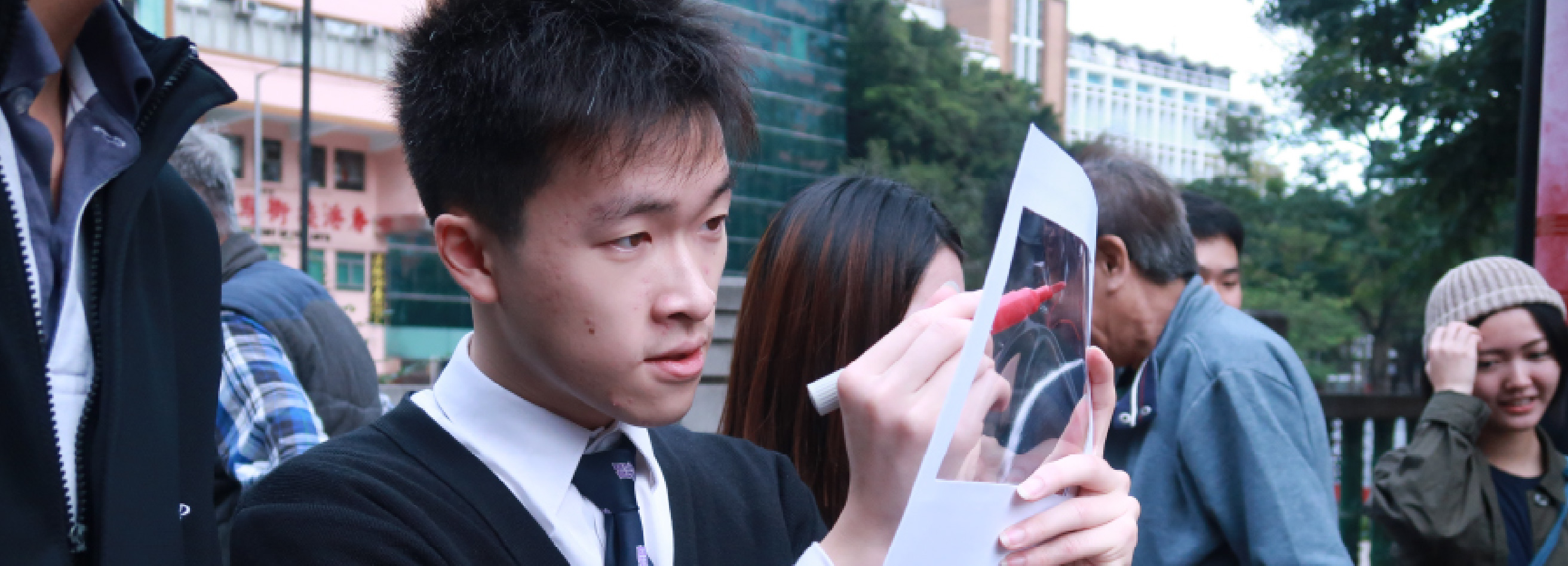Author: Kevin Siu (Co-founder, AaaM Architects)
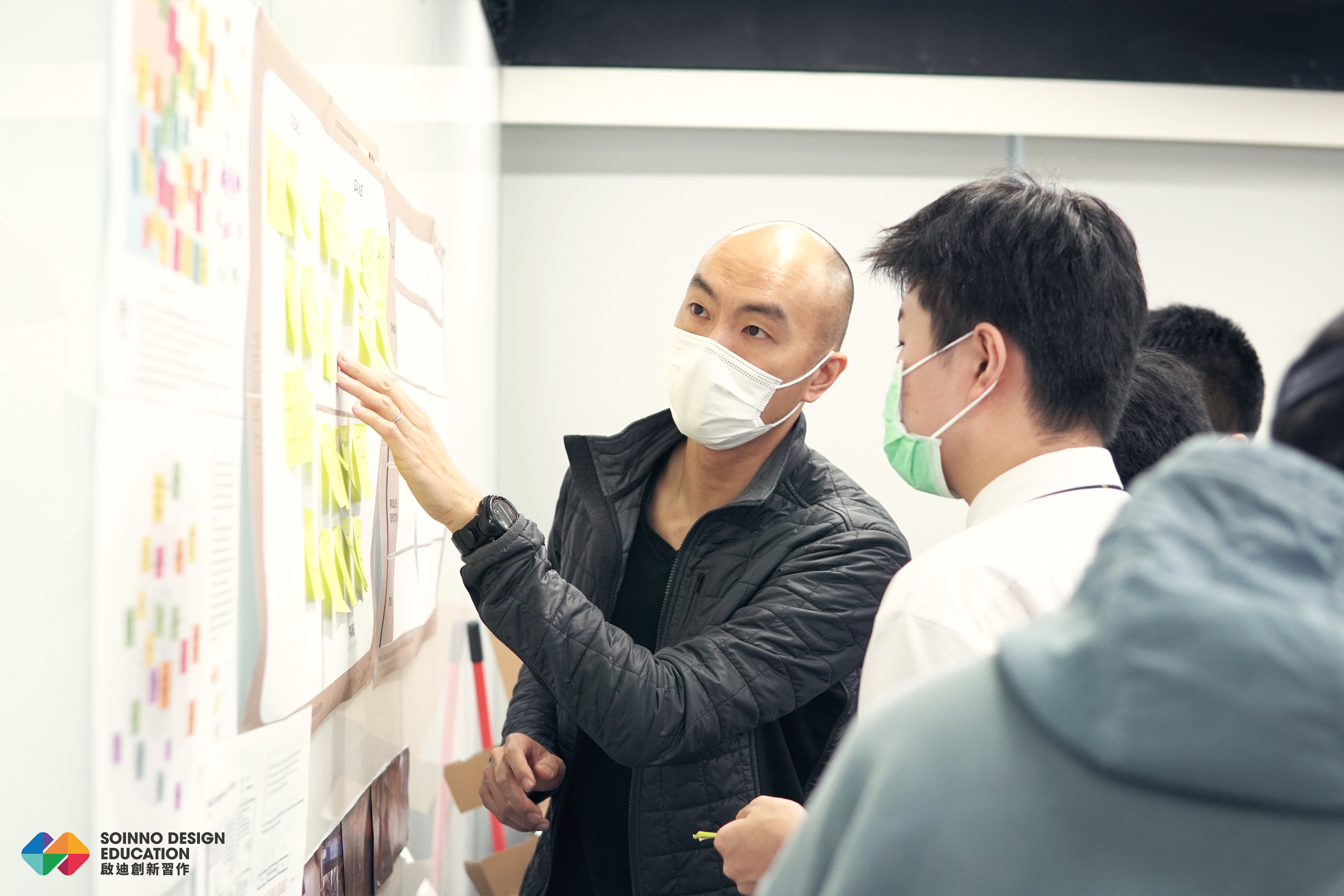
In recent years, people have increasingly realised that collaboration, innovation and resilience are keys to our future, and the education sector is at the forefront of constructing the future of our society. ‘SoInno Design Education’ is putting this spirit into practice, collaborating with teachers to explore new educational models and nurture the young to become the drivers of social innovation. As an architect, designer and part of this wave of education innovation over the past few years, I feel very deeply that future-proof skills, knowledge and experience are to be found in the thinking model of the design process. The relationship between education and design has become unprecedentedly close. If continuous learning is a requisite of constant innovation, then learning motivation is a critical topic in education.
I was honoured to be invited by the social innovation teams at PolyU and the Jockey Club earlier this year to take part in design thinking workshops tailored to secondary school students. My involvement gave me a deeper insight into how learning motivation can be stimulated by design thinking. Inherently, collaborative innovation and self-initiation complement each another. Unlike traditional top-down models of teacher-to-student knowledge transfer, design thinking workshops encourage practice-based deep learning that takes place through the autonomous interactions, observations and research of the participants. Therefore, my priority as a workshop designer was to make use of a series of interactions to catalyse continuous learning motivation in the participants, so that innovation could evolve and precipitate into consensus and solutions.
Interest is the best motivation
Before this workshop, the participating students carried out a series of studies on the United Nations’ Sustainable Development Goals (SDGs) for their Liberal Studies curriculum. We were in agreement with their teachers that further consolidating and extending the students’ learning experiences and interests would be highly beneficial to motivate their learning. On the other hand, identifying a suitable topic for the wide range of research topics on SDGs for sustainable cities and communities researched by the students, from wealth disparity, educational indicators, urban planning, to carbon emissions and so forth, in within just 12 workshop hours is our first programme design challenge. Aligning pragmatic learning with the students’ daily lives was often the focus of our programme design. This direction provided us with some clues for the topic of this programme. We gradually turned the focus to the public space in the vicinity of the school. As an everyday experience that felt close to the students’ living experience, reimagining livable streetscape was used as the topic and the common vehicle to explore sustainable design.
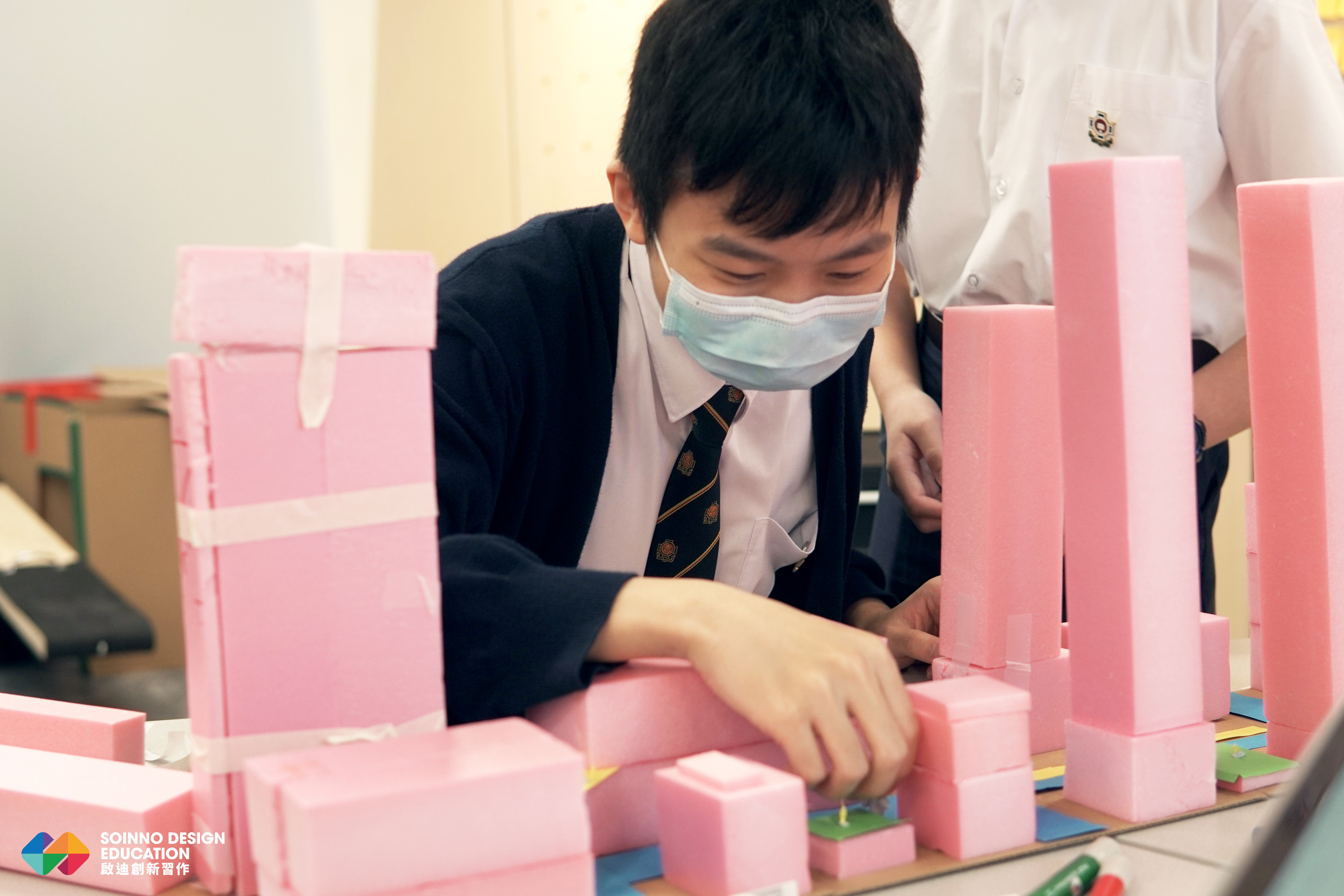
Learning motivation embedded in community interaction
From a perspective of design thinking workshop being a model of collective interaction and cooperation, its ability to gather the collective wisdom of the participants and convert it into a solution within a short period must come from a highly organic joint creation process, in which rich energy and creativity are generated from conversations and interactions. In turn, this fosters the exchange of a massive and systematic volume of knowledge and opinions within a short time. Therefore, as a learning experience, group interaction can become a strong driver of learning.
When we entered the new COVID-normal last year, we began studying the possibilities of online mode of interactions for design thinking workshops. As this round of workshops took place in a fluctuating pandemic situation, the team had to rapidly adjust the class model. With weekly sessions alternating between face-to-face and online modes, we were able to understand the different effects of the two modes in driving group interaction. During the pandemic, the workshops were first carried out online, and the Miro online design thinking interactive platform was used. Compared with other platforms we have used previously, its interactivity and usability are much more comprehensive and closer to the ideal. That said, operating the online interface took time for the students, who were using it for the first time. It was also still far from the enthusiastic atmosphere of the face-to-face sessions we were able to share midway through the programme when everyone was in the same venue. Undoubtedly, the online platform offered us a host of opportunities in terms of searching for textual and graphical details and organising our co-created materials, which brought much convenience during the analysis for design thinking. As such, the revelation that emerged from the COVID limitations was not about whether the online model could replace physical interaction, but rather how we could use the strengths of each mode to empower the different co-creation stages over the entire design thinking process. A hybrid ‘physical first–virtual later’ model seemed to offer some inspiration for blended teaching in the future.
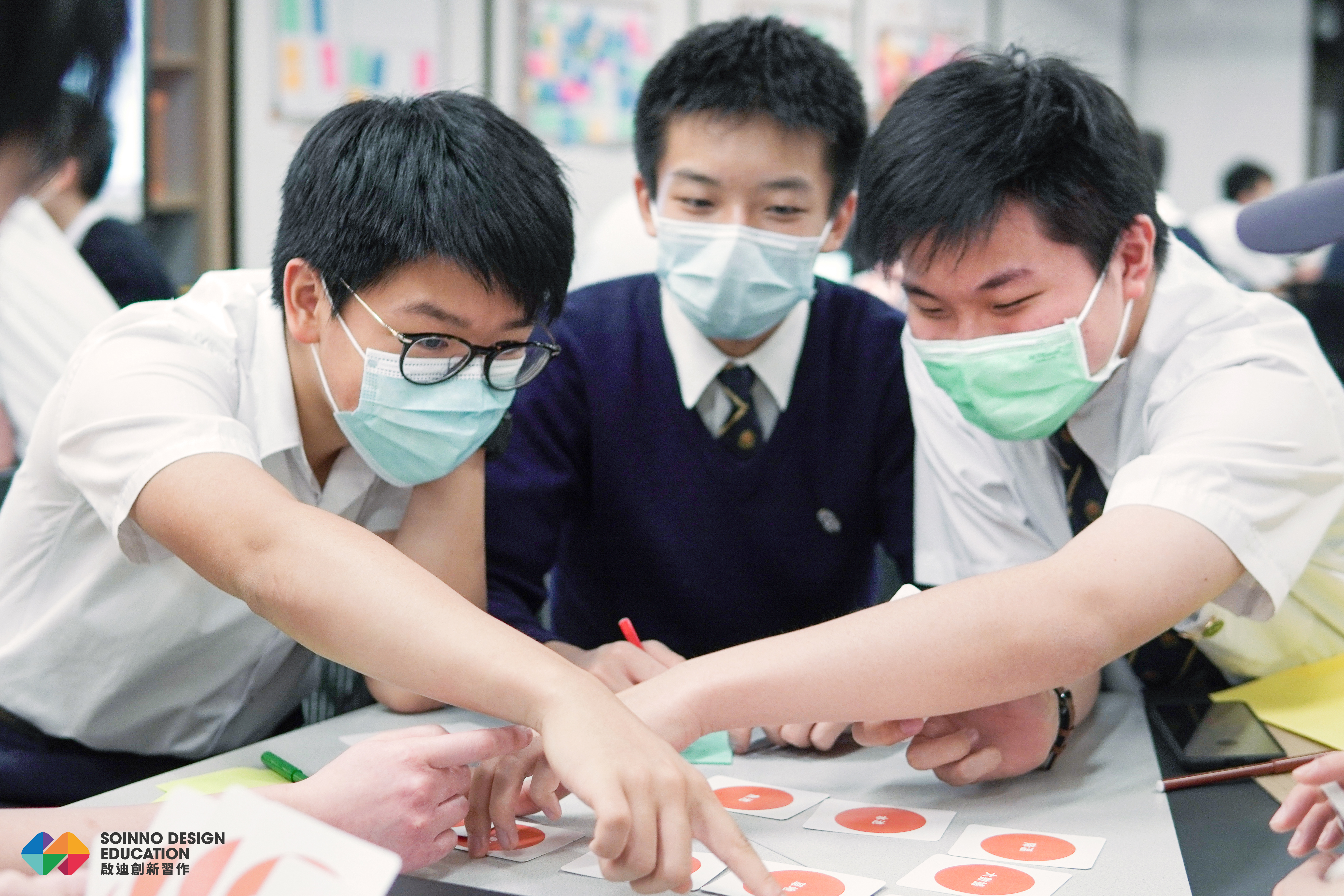
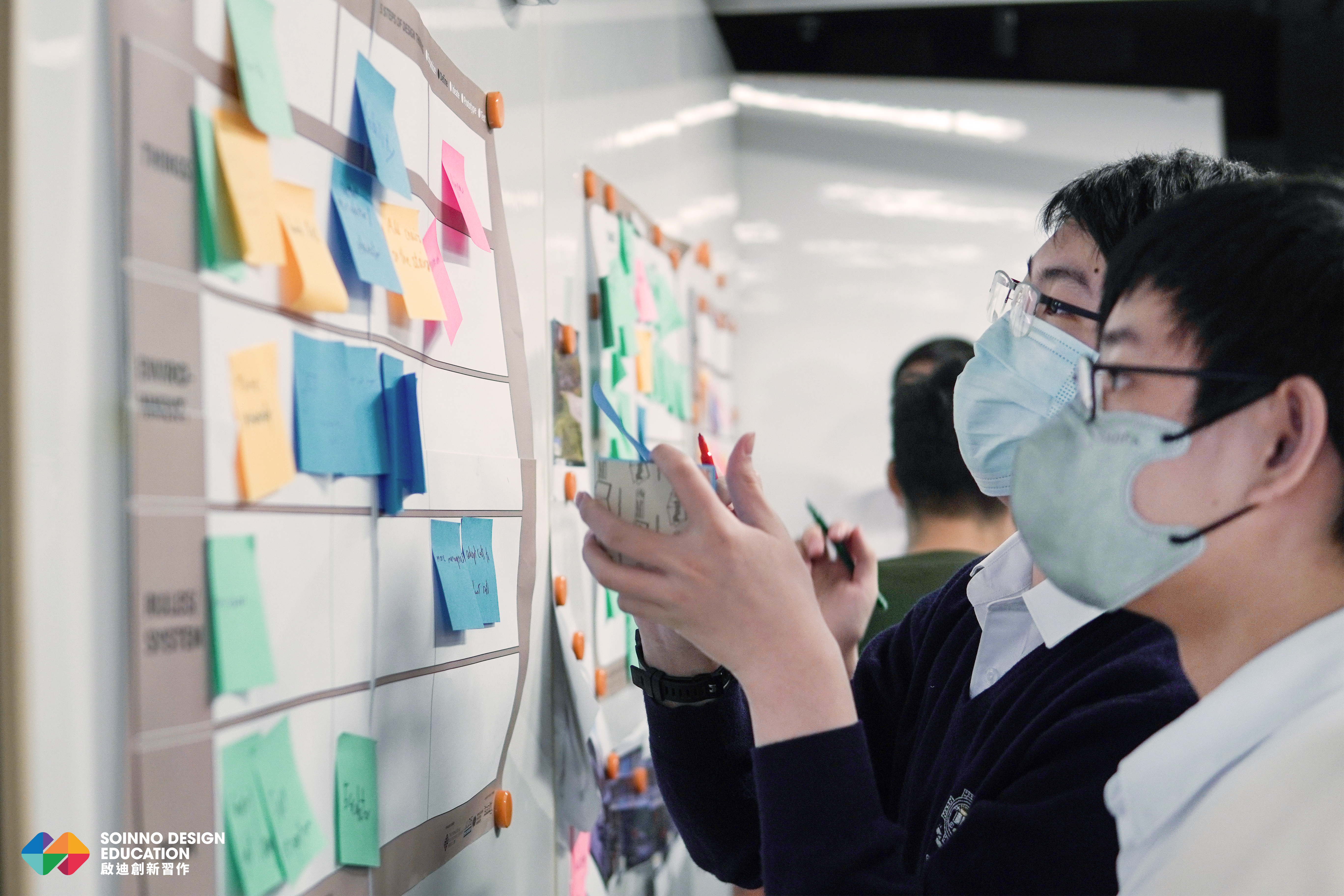
Learning motivation and value
For the education sector, interactive learning models based on design thinking are still at the early developmental stage. Students, teachers and policymakers are still exploring where these models stand. From past practice, the competition for resources and time in both the new learning models and traditional classes were evident through daily teacher–student interactions. Such an interactive learning model takes time to grow, and the growth momentum is bottom-up, originating from highly autonomous collaboration. The value of such a model can only be manifested when it is aligned with assessment criteria that are different from traditional quantification. New ideas are often inspired by practice. I sincerely hope that different sectors will continue to work together to realise the full value of an innovative learning model in the future.
